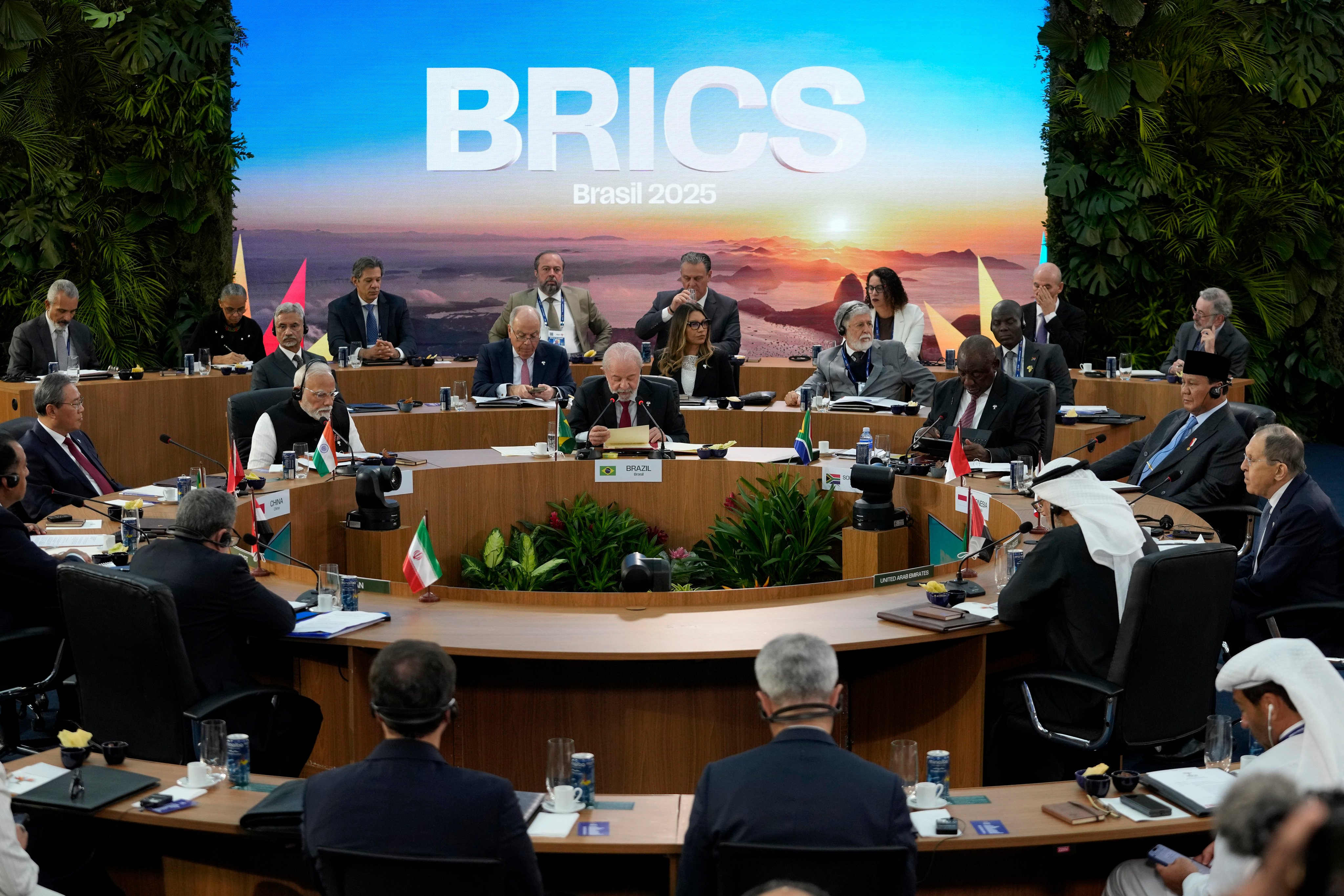For Brics, it’s a big leap from talk shop to institution of power
The bloc stands at a crossroads: can it become a true alternative to the G7, or is it merely a fractured mirror of diverging interests?

“Golden brick countries” – that’s how Brics is translated in Chinese, a name that speaks volumes about its founding aspirations. But as the expanded bloc emerged from its Rio de Janeiro summit, it projected something more potent than aspiration. The message was loud and clear: the era of unipolar global dominance is drawing to an end.
Brics leaders spoke with growing confidence, condemning “coercive” economic tactics, effectively calling for de-dollarisation and rejecting US unilateralism.
Following this display of unity, US President Donald Trump threatened an additional 10 per cent tariff on any country “aligning themselves with the anti-American policies of Brics”. Since then, he has slapped a 50 per cent tariff on Brazil, in part for the trial of former president Jair Bolsonaro, accused of plotting a coup – which Trump calls a “witch hunt”.
Once little more than a diplomatic acronym, Brics is rapidly evolving into a geopolitical symbol. Yet its internal contradictions – India’s careful balancing act, Brazil’s pragmatic diplomacy, South Africa’s domestic crises – continue to undermine its coherence. The bloc stands at a crossroads: can it become a true alternative to the G7, or is it merely a fractured mirror of diverging interests?
Brics is neither a formal military alliance like Nato nor a structured economic entity like the European Union. Rather, it is a loose strategic partnership – a forum of major emerging economies that collaborate on shared concerns, particularly global governance, development and financial reform.
Founded in 2009 after the global financial crisis struck, by Brazil, Russia, India and China, with South Africa joining soon after, Brics was conceived as a platform to push back against Western dominance and promote South-South cooperation.
Today, it represents nearly half the world’s population and 40 per cent of the global gross domestic product by purchasing power parity. It has expanded to include Egypt, Ethiopia, Iran, the United Arab Emirates and Indonesia. Brics now embodies the Global South’s demand for a seat at the top table of global decision-making.
The Rio declaration echoed those demands, calling for reforms to global institutions including the UN Security Council and International Monetary Fund. It denounced tariff spikes and proposed bold ideas on artificial intelligence governance, climate finance and alternative payment systems.
Brazilian President Luiz Inácio Lula da Silva made the stakes plain when he declared, in response to Trump’s Brics tariff threat: “We don’t want an emperor.” It was a clear shot at Trump’s America-first posture. The threat, though vaguely and inconsistently articulated, had real-world consequences: India’s rupee wobbled. Chinese and South African currencies dipped.
Ironically, ambiguity might be to Brics’ short-term advantage. A coordinated counterstrike could provoke conflict. Symbolic defiance, however, might unify its members, if only briefly. Trump’s threat spotlighted both the bloc’s risks and potential.
“There is a vacuum created by Trump’s America,” said veteran journalist Jonathan Watts, who has reported from both China and Brazil. “But it’s far from clear whether Brics is cohesive or organised enough to fill it.” He sees the bloc as still “outside the big economic party” of the G7.
At its core, Brics is bound not by a shared ideology, but primarily by frustration with Western-led institutions. That may not be enough.
Unhandled type: inline-plus-widget {“type”:”inline-plus-widget”}
For China and Russia, Brics serves partly as an anti-Western platform. India maintains strong ties with the United States and is reluctant to take sides. Brazil seeks influence but avoids being drawn into rivalries. South Africa struggles with domestic instability. New members bring energy but also divergence. At an April ministerial meeting, cracks surfaced as Egypt and the UAE resisted a joint declaration on UN reform.
These contradictions risk leaving Brics as little more than a talk shop, a forum heavy on rhetoric and light on results. Without tangible progress, its growing ambitions may buckle under internal strain.
For Beijing, Brics is both shield and vehicle. As US-China tensions rise – over trade, technology, Taiwan and maritime security – China sees the bloc as a way to build resilience and expand influence. A Brics-led payment system could reduce reliance on the dollar and lessen exposure to US sanctions.
Yet a delicate balancing act is required. If Brics is perceived as too closely aligned with Moscow, Tehran or petro-authoritarianism, its credibility could erode. In crises, national interests may easily override group solidarity. That’s why the next phase matters. Brics must move from declarations to durable frameworks. Can it create institutions that outlast summits? Can it deliver meaningful results for citizens?
What we’re witnessing is not the rise of a rival superpower but the messy birth of a multipolar order, driven by dissatisfaction with the current system and a hunger for change. The challenge lies in turning that vision into structures and systems.
But the leap from symbol to substance is fraught. Internal tensions, external pressures and a lack of shared ideology all threaten durability. The future of Brics hinges on delivering credible, functional alternatives to the status quo.
For China, this is a pivotal moment. It can use Brics defensively, or elevate it as a platform for inclusive, forward-looking leadership. That choice will shape not just China’s future but the global order. If Brics succeeds, it may one day be spoken of in the same breath as Nato or G7 – not as an echo but a defining institution of a new era. If it fails, it may fade into irrelevance – another grand idea undone by internal contradictions.
Will the Golden Brick countries dazzle? Time will tell.